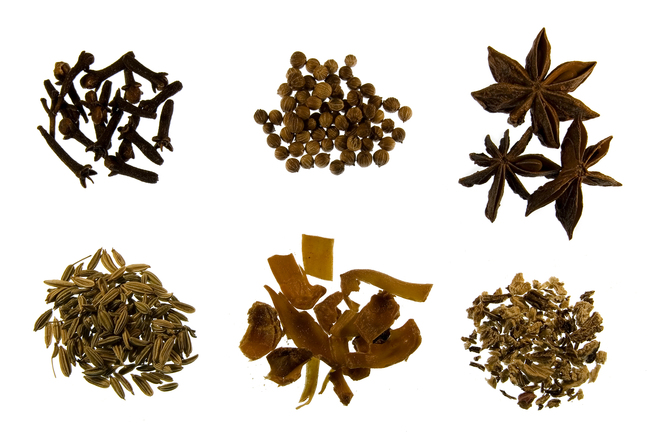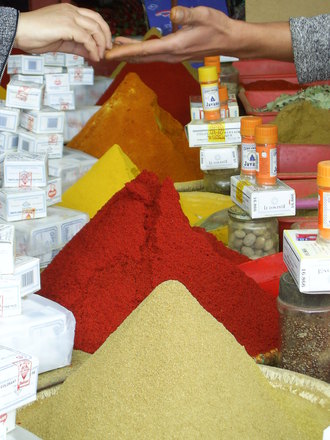The gut is by nature one of the best machines imaginable for chemical conversion of food into energy. As a result, the majority of what we consume is changed into something different with incredible efficiency. The stomach begins this process with the pH of battery acid, plus enzymes. Then, the intestines—25 feet long and filled with hungry bacteria and more enzymes— do the rest. Considering the environment, it is surprising that anything we consume actually absorbs into our bloodstream intact.
Bioavailability, often defined as the amount of a compound put into the body compared to the amount reaching blood circulation, is an unexpectedly complex subject. Luckily, the pharmaceutical scientific literature has given us some good tools to understand it adequately.
In order to be bioavailable, a compound must first remain stable and retain its identity in the gut, which is no small order. Assuming it stays intact, its bioavailability can be divided into four main classes, categorized by the Biopharmaceutics Classification System (BCS). According to the BCS system, there are only two chemical factors driving bioavailability: its solubility and its permeability. Water-soluble compounds like ascorbic acid are considered class I (high solubility and permeability), the ideal scenario for bioavailability. However, many fat-soluble compounds such as curcumin are considered BCS Class IV, possessing low solubility and permeability. With the potential of curcumin and its more than 6,700 published studies, this means a lot of opportunity in the face of a lot of challenge.
For Class I to III compounds, dose delivery is often fairly easy to solve. Optimizing these based on pH, particle size, solid dispersions, crystallization or salt forms can be enough to ensure adequate absorption. But what to do about the difficult Class IV compounds?
The water solubility of a compound is based on its chemical polarity, which depends on the electric charge of a compound (given by the presence of charged atoms like oxygen) and its asymmetry. Water (H2O) is polar, because it’s an asymmetric molecule containing mostly oxygen by weight. On the other hand, fats and oils, generally symmetric compounds with a lot of uncharged carbons, are nonpolar and not very water soluble.
The spectrum of polarity includes some compounds called amphiphilic (meaning both-loving) which are able to interact with both polar and nonpolar compounds. As a result, they are ideal to include in many dose-delivery systems. Because ‘like dissolves like’, amphiphiles can dissolve both fat- and water-soluble compounds; detergents like soap, which dissolves grease into water, are one everyday example of this type of compound.
The use of amphiphiles to improve bioavailability has already been perfected in our gut. High-purity phospholipids are the key components used by the small intestine to absorb dietary fat. Phospholipids are also a main part of cell membranes, whose critical function is to separate the cell from its environment while at the same time allowing both polar and nonpolar nutrients to pass through. In the past few years, science has harnessed these unique and interesting properties of phospholipids to better deliver active compounds to target tissues.
To date, thousands of studies have been published on improved bioavailability technologies such as solid-lipid particles, nanoparticles, micelles, liposomes, emulsions, microparticles and others. Phospholipids are one common factor among these technologies, which ultimately stabilize and solubilize compounds of a class IV nature. Curcumin, resveratrol and other fat-soluble compounds all clearly benefit from some of these advanced dose delivery systems.
Yet challenges remain. In the view of the literature and medical use, reliable human efficacy is achieved infrequently; the number of successful human studies using these advanced technologies pales in comparison to the number of successful test tube or animal studies. Why? From a dose delivery view, it is also well understood that there is an ideal concentration of active in the body: too little is ineffective, while too much may be counterproductive. Striking that balance is a difficult task.
The human body and how exactly it works remains much of a mystery, still with vast areas of uncharted territory. And some big differences exist in how we absorb, metabolize and excrete what we consume, due to genetics, diet, what we consume it with and other variables. Plus, each active compound is an individual chemical entity with unique physicochemical characteristics and bioavailability. Hence, the need for good and rigorous science.
Also, our current capabilities and standards for measuring bioavailability are sometimes not relevant to efficacy. For example, bioavailability of fat-soluble compounds is generally measured in blood plasma, because plasma is mostly water-based and the best medium to measure water-soluble compounds. However, plasma data often does not reflect actual bioavailability of fat-soluble compounds, because plasma does not generally attract these compounds like blood cell membranes and organ tissues do. Many dose-delivery technologies work magnificently in the test tube, but may not survive stomach acid or the small intestine intact. And some delivery systems may appear to improve bioavailability but only for an inactive metabolite like a glucuronide.
In these cases, the chemical identity of what we measure in the blood, in addition to what part of the blood we are measuring, proves to be more important than the amount we are measuring. When the science of a bioavailability study is off-kilter, it can ultimately lead to the selection of poor clinical study material and a failure to show efficacy. Good science in the early stages of development is critical, and while oil and water can mix, dose delivery is ultimately just a means to promoting health.
By: Blake Ebersole
This article was originally published in Natural Products Insider in August 2014



 On the other side of getting enough of the active compound absorbed to make a difference is the argument for moderation. Again, we seek to know what the relationship is between the amount of dose and the health benefit observed, and no two natural compounds are exactly alike in this way. The scientific results can be hard to predict. For example, in cell culture experiments where one biological mechanism is isolated, it is common and desirable to see the response increase as the dose increases. But for human trials, more does not always mean better. In one example, daily low dose (750 mg) of rosemary marginally improved cognitive function in elderly adults, but the higher 6-gram dose did not.4
On the other side of getting enough of the active compound absorbed to make a difference is the argument for moderation. Again, we seek to know what the relationship is between the amount of dose and the health benefit observed, and no two natural compounds are exactly alike in this way. The scientific results can be hard to predict. For example, in cell culture experiments where one biological mechanism is isolated, it is common and desirable to see the response increase as the dose increases. But for human trials, more does not always mean better. In one example, daily low dose (750 mg) of rosemary marginally improved cognitive function in elderly adults, but the higher 6-gram dose did not.4